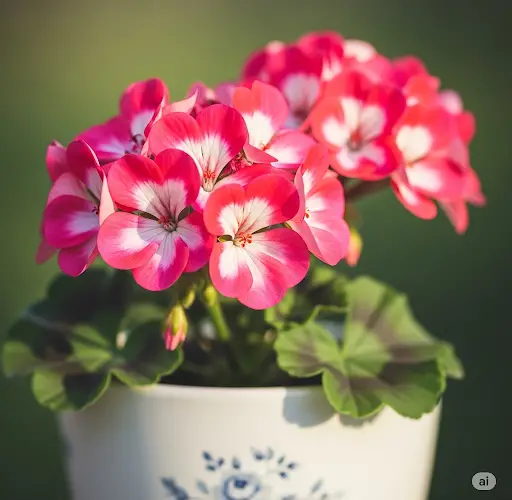Geraniums are among the most beloved flowering plants for both balconies and gardens. They are admired for their bright colors, rich foliage, and long blooming season. Yet even this resilient plant can sometimes wilt, stop flowering, or look as if it’s on the brink of death. If you’ve been struggling with a geranium that seems beyond saving, there’s a surprisingly simple and effective method you can try right now—one that can bring your plant back to life and make you wonder why you hadn’t done it sooner.
This method doesn’t involve any expensive fertilizers or hard-to-find ingredients. In fact, everything you need may already be in your home. Let’s explore this natural revitalizing technique that works wonders on tired, weak, or dying geraniums.
Why Geraniums Decline
Although geraniums are tough and adaptable, several factors can cause them to deteriorate:
-
Poor soil nutrition: Over time, potted geraniums can exhaust the nutrients in their soil, especially without regular fertilizing.
-
Water stress: Both overwatering and underwatering are harmful. The roots may rot or dry out.
-
Lack of pruning: Dead blooms and leggy stems can slow down growth and prevent flowering.
-
Insufficient light: Geraniums need at least 4–6 hours of sunlight daily. Without it, they grow weak and sparse.
-
Pests or disease: Infestations like aphids or fungal problems can drain the plant’s vitality.
If your geranium looks lifeless, don’t rush to throw it away. It might just need a proper cleanse and boost.
The Miracle Reviver: Hydrogen Peroxide
The star of this rejuvenating method is hydrogen peroxide (3%), a common household item often found in first aid kits. This simple solution has a powerful effect when used correctly on plants. It helps:
-
Oxygenate the soil,
-
Eliminate harmful bacteria and fungi,
-
Stimulate root development,
-
Cleanse the root zone and prevent rot.
Geraniums, in particular, respond quickly and dramatically to hydrogen peroxide treatments, especially when their roots are stressed.
How to Apply Hydrogen Peroxide to Geraniums
What you’ll need:
-
1 tablespoon of 3% hydrogen peroxide,
-
1 liter of room-temperature water,
-
A watering can or spray bottle.
Instructions:
-
Prepare the solution: Mix one tablespoon of hydrogen peroxide into one liter of water. Stir well to ensure it’s evenly diluted.
-
Apply directly to the soil: Water your geranium with this solution just like you would during a normal watering session. Make sure the liquid reaches the roots.
-
Optional leaf spray: You can also lightly spray the leaves if they appear dull or lifeless, but avoid doing this during strong sunlight to prevent burns.
This treatment can be repeated once every 10–14 days until the plant shows significant improvement.
What to Expect
After the first treatment, you may notice the soil becoming more aerated and the plant perking up within a few days. Leaves often regain their green color, and new buds can start forming within a week or two. Even geraniums that looked dead can sprout fresh growth from the base if their roots were still alive.
Hydrogen peroxide works as both a root stimulant and a gentle disinfectant, helping the plant recover without chemical overload.
Extra Care Tips to Keep Your Geranium Thriving
While the hydrogen peroxide method is excellent for revival, combining it with basic care tips ensures long-term health and continuous blooms:
-
Sunlight: Geraniums need direct sunlight to flower. Place them on a sunny windowsill, balcony, or garden patch.
-
Watering: Allow the soil to dry slightly between waterings. Geraniums hate soggy roots.
-
Pruning: Regularly remove dead flowers and trim long stems to promote bushy growth.
-
Feeding: Use a balanced liquid fertilizer every 2–3 weeks during the active growing season.
-
Soil: Well-drained, loose soil is best. If you suspect compaction or root rot, consider repotting with fresh soil.
When to Try This Method
This reviving method is most effective:
-
After a long winter indoors,
-
When the plant shows no signs of flowering,
-
If the leaves are yellowing or wilting,
-
After root shock due to repotting or overwatering.
You don’t have to wait until your plant is nearly gone—hydrogen peroxide can be part of a preventative care routine as well.
Final Thoughts
There’s no need to give up on your geranium just because it looks beyond help. A simple solution of hydrogen peroxide can breathe life back into your plant, restore its strength, and encourage it to bloom beautifully once again. Try this method today, and you’ll be amazed at how quickly your geranium can transform from lifeless to lush.


